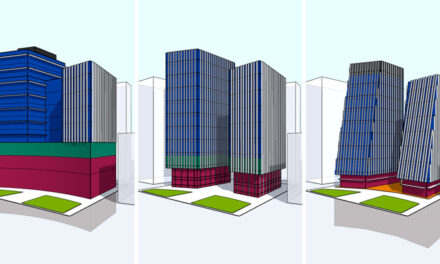
Using NX and Learning Advantage to enable students to develop the professional skills required by industry
High quality of teaching, a range of production workshops and use of Siemens PLM Software solutions together create an international center for education and research.
Solving tomorrow’s problems today
With 1,700 employees and 15,000 students, Luleå University of Technology in northern Sweden is a thriving center of teaching and research that collaborates with businesses, educational institutions and public bodies across the world.
The Department of Engineering Sciences and Mathematics is home to a range of engineering courses that encompass materials, mechanics, power and sustainable energy. For engineering students within this department, the study of computer-aided design (CAD) is a basic requirement. However, students from other departments can select CAD as an optional subject. These include electrical engineers and space engineers, plus those studying subjects such as business administration and computer science. According to Peter Jeppsson, senior lecturer at Luleå University, CAD is a very popular choice.
The department has well-equipped workshops with a range of tooling machinery. Jeppsson describes the ethos of the department: “At the university we teach CAD software and engineering theory at the same time, not as separate subjects. We give students the opportunity to solve real-world problems and make better products by considering overall function, performance, production and lifecycle. We use computer-aided design and simulation for every aspect of a product.”
At Luleå University, product development is taught using a portfolio of Siemens PLM Software solutions that were first implemented three decades ago. It includes NX software, Teamcenter software, the Simcenter portfolio of simulation and testing software and Jack human simulation software in the Tecnomatix portfolio. With 500 seats of NX, 150 licenses of Teamcenter and access to structured online training through the e-learning portal, Learning Advantage, thousands of students at the university have gained skills using product development tools.
Becoming a practical engineer
“I know that when the university was originally looking for a solution, one of the main priorities was strength in CAD, finite element analysis (FEA) and computer-aided manufacturing (CAM),” comments Jeppsson. “The ability of NX to generate tool paths for machining is fundamental to the way in which we emphasize practical skills.”
Because the department teaches software skills at the same time as engineering knowledge, students learn about FEA and simulation early on in their education. From the beginning, they learn how to use NX to address and solve design problems. They go on to analyze product function and manufacturability through advanced courses and independent projects.
Learning and growing with NX
Students using NX have access to Learning Advantage for four years. “NX is easy to learn and is forgiving – students can fix problems if they make a mistake,” says Jeppsson. “That is why we also teach it in pre-university summer schools. However, as a professional software it is also very comprehensive. Learning Advantage invites students to explore the software then gives them challenges according to their own progress and development. There is always something new to learn, which is why advanced students never get bored.
The power of professional software
The university has particularly strong expertise in vehicle dynamics. With automotive industry experience developing active safety systems, associate professor Jan van Deventer assists students as they learn how to integrate embedded systems, such as electronic hardware with associated software, in mechanical systems. Some have undertaken ambitious projects developing anti-skid, traction control and electronic stability control systems. “Because students at Luleå University can build things and test their ideas, they are more than ready to contribute to industry when they graduate,” van Deventer says.
The university’s emphasis on building efficient, environmentally friendly products requires a full understanding of product lifecycle management. For this reason, advanced students also learn some aspects of Teamcenter. According to Jeppsson, students respond very positively to Teamcenter because it helps to put their product development knowledge into context. The department is planning to implement and teach Teamcenter more widely.
Preparing students for the real world
“With comprehensive software from one vendor and a good teaching package, students gain both knowledge and confidence,” comments Jeppsson. “The students don’t hesitate to use the software to model, simulate and manufacture products whenever there’s a need.” Many globally recognized companies commission research by engineering students and many take on graduates. Löthman feels that being very familiar with NX enables students to express their design creativity and provide more to industry when they complete their courses. Danielsson notes that he gained a confident understanding about how CAD systems can be used at different stages in the product development process to save time and money and produce a better result.
The department wants students to address the big issue of how to improve products and how to make them efficiently, and NX is fundamental to that learning outcome. “NX is easy to learn and powerful enough to be used throughout a university student’s entire education,” says Näsström. “In addition, several of our research partners use NX as a primary tool. Using a high-end software for modeling and simulation in our education makes our students attractive.” Ilar adds, “They are able to share their experience of working to industry-standard best practice with their future employers and colleagues.”
Luleå University of Technology gives students the opportunity to take a leading role in progress towards Industry 4.0. “Simcenter is the state-of-the-art platform for computer-aided engineering,” concludes Jan-Olov Aidanpää, chair professor in computer-aided design at Luleå University. “With NX and Simcenter, students discover possibilities and learn a methodology for design and simulation. Our aim is that they take this knowledge and introduce the latest technology to Swedish industry.”






